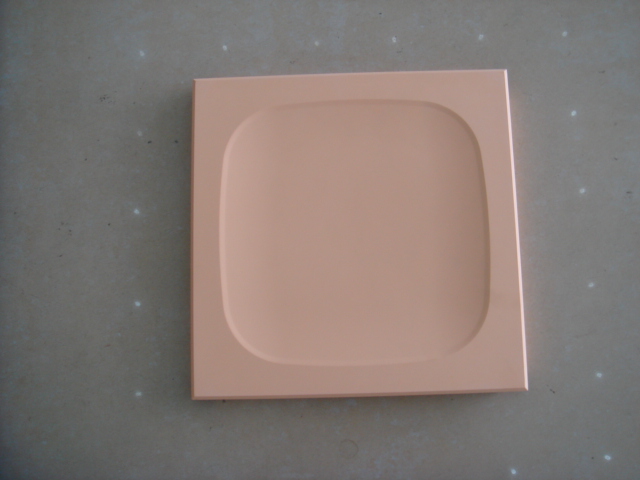Views: 0 Author: Site Editor Publish Time: 2025-07-21 Origin: Site









Cutting fiberglass panels needs the right tools and safety gear. You must be careful when you cut them. Protect your skin, eyes, and lungs from dust. Dust from fiberglass panels can make you itch or have trouble breathing. You can get hurt by skin or eye irritation. Breathing in dust can hurt your lungs. Lifting big panels can also strain your body. Always get gloves, goggles, and a dust mask before you start. Pick a clean and tidy place to work. This helps you stay safe and get good results. Fiberglass panels are strong and have tough surfaces. They are about 0.090 inch thick. This makes them strong but still easy to use.
Always wear safety gear like gloves, goggles, and a dust mask to protect your skin, eyes, and lungs from fiberglass dust.Use the right tools for each cut: circular saws for straight cuts, jigsaws for curves, and rotary tools for detailed work.Measure and mark your panels carefully, then secure them with clamps to keep them steady while cutting.Cut slowly and let the tool do the work to avoid cracks and rough edges; use masking tape along cut lines for cleaner results.Clean up dust and scraps immediately using a shop vacuum and wet wiping to keep your workspace safe and tidy.
When you cut fiberglass panels, you need the right tools for the job. Each tool works best for a different type of cut. The table below shows the most recommended cutting tools, their advantages, and when to use them:
Cutting Tool | Advantages | Limitations/Considerations | Typical Use Case/Notes |
|---|---|---|---|
Rotary Tools (e.g., Dremel) | High precision, versatile, easy to handle | Not for thick or large-scale cutting | Great for small, detailed cuts |
Angle Grinder with Diamond Blade | Powerful, fast, good for thick panels | Makes dust and noise, needs safety gear | Best for thick fiberglass and big jobs |
Jigsaw with Fiberglass-Specific Blades | Easy to control, less splintering | Needs special blades, speed control | Good for curved or odd shapes |
Circular Saw with Carbide-Tipped Blade | Fast, clean straight cuts | Not for curves, makes dust | Best for straight cuts on large sheets |
Oscillating Multi-tool | Precise, little dust, fits tight spaces | Only for small or detailed cuts | Good for corners and small areas |
You should use diamond or carbide-tipped blades for cleaner cuts and longer blade life. Jianan offers fiberglass panels that work well with these tools, making your project easier and more efficient. If you need to cut other products like a fiberglass cover or a fiberglass box, these tools will help you get the job done right.
Always protect yourself when working with fiberglass. The dust can irritate your skin, eyes, and lungs. Wear the right safety gear every time you cut.
Wear goggles to keep dust out of your eyes.
Put on gloves to protect your hands from sharp edges and fibers.
Use a dust mask or respirator to avoid breathing in harmful dust.
Cover your skin with long sleeves, pants, and high socks.
Use a dust collection system or shop vacuum to keep the air clean.
Many safety products meet international standards like USDA, Greenguard, FM, and ISO 9001. This means they offer strong protection for your health.
Choose a well-ventilated area to work. Open windows or use fans to move air and remove fumes.
Set up local exhaust ventilation if you cut many panels or use strong adhesives.
Support your panel from underneath to keep it steady and prevent chipping.
Check your workspace for hazards before you start. Remove anything that could get in the way.
Keep your tools sharp and clean. Dull blades can cause rough cuts and more dust.
Clean up dust and scraps right after you finish. This keeps your workspace safe and tidy.
A good workspace helps you cut fiberglass panels safely and get the best results.
Before you start to cut frp panels, you need to measure and mark your lines with care. Use a tape measure to find the exact length and width you want. Mark your lines with a pencil or a fine-tip marker. For straight lines, use a ruler or a straightedge. If you need to make a curved cut, use a flexible ruler or a template. Double-check your measurements before you start cutting. This step helps you avoid mistakes and waste less material.
Tip: Place masking tape along your cut line. This keeps the fibers in place and gives you a cleaner edge. It also helps reduce dust and splinters when you cut.
You must keep your fiberglass panels steady while you cut. A stable work surface is very important. Place your panel flat on a strong table or workbench. Use clamps to hold the panel down. This stops it from moving or slipping. If you plan to make the same cut many times, use a jig or template. This tool helps you keep your cuts straight and accurate.
Always use sharp blades, such as diamond-tipped saw blades, for a smooth cut.
Wear safety gear like gloves, goggles, and a dust mask.
Cut in a well-ventilated area or outdoors to keep dust away from your lungs.
Use a shop vacuum or dust collection system to clean up as you work.
Securing your panel helps you stay safe and get a professional result. These steps work for other fiberglass products too, such as a fiberglass cover or a fiberglass box.

Cutting fiberglass panels requires the right approach for each type of cut. You can achieve clean, professional results by following the correct steps and using the best fiberglass cutting methods. Below, you will find step-by-step instructions for straight cuts, curved cuts, and detail work. These cutting techniques help you avoid cracks, reduce dust, and keep your project safe.
You can make straight cuts in fiberglass panels using several tools. The most common tools include circular saws, electric shears, and angle grinders. Each tool works best for different panel thicknesses and project sizes.
Step-by-Step for Straight Cuts:
Mark your cut line with a pencil or marker. Place masking tape along the line to hold fibers in place and reduce splintering.
Secure the panel on a stable surface using clamps. This prevents movement and helps you cut frp panels accurately.
Choose your tool:
Use a circular saw with a carbide-tipped blade for long, straight cuts on large panels.
Electric metal shears or steel cutting shears work well for thinner panels and produce less dust.
Angle grinders with diamond blades are suitable for thicker panels.
Start the cut slowly. Let the tool do the work. Do not force the blade.
Keep a shop vacuum or dust collection system close to the cutting area. This helps control fiberglass dust.
Remove the masking tape after cutting for a cleaner edge.
Tip: Keep the protective plastic film on the panel during cutting. This reduces dust and makes marking easier.
Curved cuts require more control and the right blade. You can use a jigsaw with a fine-toothed or carbide grit blade for best results. Routers with carbide bits also work well for smooth, precise curves.
Best Practices for Curved Cuts:
Use a jigsaw with a fine-toothed or carbide grit blade. This gives you better control and cleaner edges.
Take small bites as you cut. Move slowly to prevent tear-out and cracking.
Support the panel from below. Keep the saw tight to the material to reduce vibration.
For small sections, heavy-duty shears can help you cut frp panels with more control.
Always use blades designed for plastic or fiberglass materials.
Wear safety goggles, gloves, and a dust mask to protect yourself from dust and debris.
Note: Cutting fiberglass panels for curves is similar to working with thin acrylics. Work slowly and avoid overheating the blade to prevent fraying.
Drilling holes and making detailed cuts in fiberglass panels requires precision. You can use rotary tools, nibblers, or tin snips for these tasks.
How to Drill and Make Detail Cuts:
Use a rotary tool with a fiber-reinforced cutoff wheel for small holes or intricate shapes.
Electric metal cutting shears provide smooth cuts with minimal dust, perfect for outlets or small cutouts.
Tin snips or vinyl snips are ideal for minor detail work.
Nibblers work quickly and create very little dust, making them a good choice for cutting frp panels in tight spaces.
Keep the protective film on the panel to catch dust and improve cleanliness.
Always secure the panel before drilling or cutting details to prevent cracks.
Safety Reminder: Always wear a respirator and goggles when drilling or making detail cuts. Keep a vacuum hose near the cutting area to control dust.
You can use these fiberglass cutting methods for other products, such as a fiberglass cover or fiberglass box. Jianan fiberglass panels are designed for easy handling and cutting, making your project efficient and safe.
When you cut fiberglass, you need to focus on safety and quality. Dust and cracks are the main risks. You can avoid injury and protect your panels by following the right steps. Good habits help you get clean results and keep your workspace safe.
Dust from fiberglass can irritate your skin, eyes, and lungs. You should always protect yourself when working with fiberglass. Here are some important steps:
Wear gloves and long sleeves. This keeps tiny fibers off your skin and prevents itching or redness.
Use a respirator mask rated for fiberglass. This stops you from breathing in harmful dust.
Put on safety goggles with side shields. These protect your eyes from flying particles.
Work in a space with good airflow. Open windows or use fans to move dust away.
Keep a shop vacuum or dust collection system close to your cutting area. Clean up dust as you go.
Tip: If you get fiberglass dust on your skin, wash with cold water first. This helps remove fibers before they cause irritation.
You want your panels to look smooth and professional. Cracks and chips can ruin your project. Use these cutting techniques to keep your fiberglass panels in top shape:
Secure your panel on a flat, stable surface. Use clamps to stop movement and reduce vibration.
Choose the right blade. Carbide-tipped or diamond-coated blades work best for fiberglass reinforced panels.
Cut at a steady, controlled speed. Let the tool do the work. Do not force the blade.
For straight cuts, guide your circular saw slowly along the marked line. For curves, use a jigsaw with a fine-toothed blade.
For thin panels, score the surface with a sharp knife, then snap the panel gently along the line.
Always clamp the panel before you cut. This helps prevent rough edges and cracks.
Note: These tips also work for other fiberglass products, such as a fiberglass cover or a fiberglass box. You can find more details about panel options and safe cutting at Jianan’s fiberglass panels page.
By following these steps, you make sure your project stays safe and your panels stay strong. Good dust control and careful cutting help you get the best results every time you cut fiberglass.
After you cut fiberglass reinforced panels, you want the edges to look smooth and feel safe to touch. Sharp or rough edges can cause injuries or make installation harder. Start by checking the edges for any bumps or splinters. Use a file or 60-grit sandpaper to sand down rough spots. Move the sandpaper in one direction along the edge. This helps you get a straight, even finish. If you have a lot of panels, a power sander can save time.
Always wear gloves, a mask, and goggles when sanding. Fiberglass dust can irritate your skin and lungs.
For a professional look, you can apply an epoxy sealer to the sanded edges. This seals the exposed fibers and protects against chemicals or moisture.
Tip: Clamp the panel while sanding to keep it steady and prevent slips.
You can use these steps for other fiberglass products, such as a fiberglass cover or a fiberglass box. Smooth edges make your project safer and more attractive.
Cleaning up after working with fiberglass panels is very important for your health and the environment. Fiberglass dust can stay in the air and cause problems if you breathe it in or touch it.
Seal your workspace to keep dust from spreading.
Use a shop vacuum with a HEPA filter to collect dust. Do not sweep or blow the dust, as this spreads it.
Wet down the area with a spray bottle before wiping surfaces. This keeps dust from becoming airborne.
Wear a respirator, goggles, and protective clothing during cleanup.
Wipe all surfaces with a damp rag to pick up leftover dust.
Dispose of waste and used rags in sealed bags. Do not reuse fiberglass dust as filler.
If possible, use recycling services for fiberglass waste. This helps protect the environment, since improper disposal can harm both people and nature.
Note: Always wash your hands and change clothes after cleanup to avoid skin irritation.
By following these steps, you keep your workspace safe and help protect the environment. Clean edges and a tidy area show your commitment to quality and safety.
To cut frp panels safely and efficiently, follow these steps:
Wear safety gear, including goggles, gloves, and a dust mask.
Measure and mark your fiberglass panels with care.
Secure the panel with clamps to prevent movement.
Use the right tools, such as a fine-tooth saw or rotary tool.
Cut slowly along the marked line and sand the edges smooth.
Clean up dust and debris right away.
Always choose high-quality tools and protective equipment. For special shapes or large projects, consult experts or the Jianan team. Explore related products like fiberglass cover and fiberglass box for more solutions.
You can prevent cracks by using sharp, carbide-tipped blades and securing the panel with clamps. Cut slowly and let the tool do the work. Always use masking tape along the cut line for extra support.
A circular saw with a carbide-tipped blade works best for straight cuts. For curves or small details, use a jigsaw or rotary tool. Always choose blades made for fiberglass materials.
You can cut fiberglass panels indoors, but you must use a well-ventilated area. Set up a dust collection system or shop vacuum. Wear a dust mask and goggles to protect yourself from fiberglass dust.
Use 60-grit sandpaper or a file to smooth rough edges. Move the sandpaper in one direction. For a professional finish, apply an epoxy sealer to the edge. Always wear gloves and a mask during this step.
You can find premium fiberglass panels at Jianan’s product page. Jianan also offers fiberglass cover and fiberglass box options for different project needs.
+86 13913647707 / 13915651436


